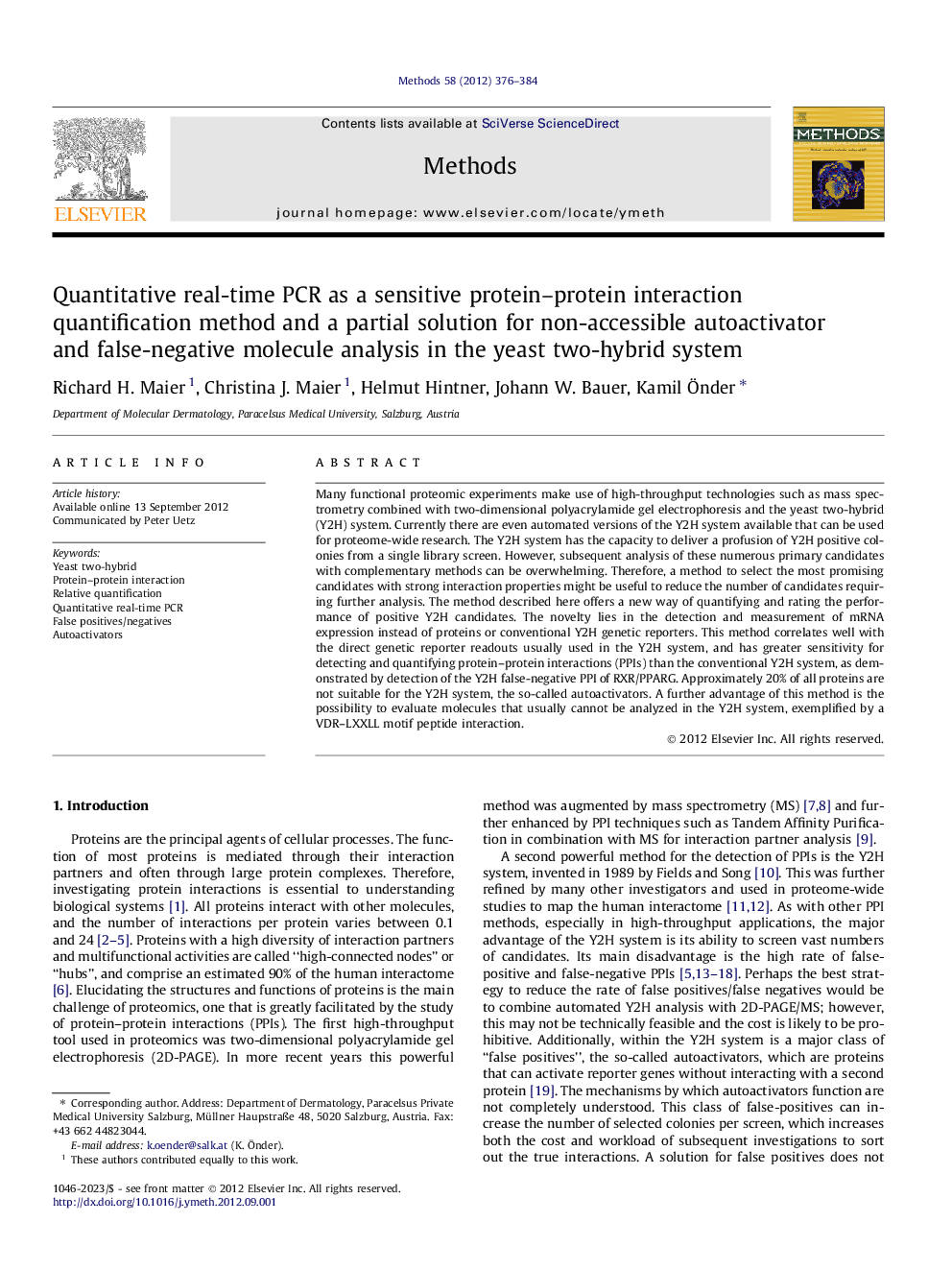| Article ID | Journal | Published Year | Pages | File Type |
|---|---|---|---|---|
| 1993755 | Methods | 2012 | 9 Pages |
Many functional proteomic experiments make use of high-throughput technologies such as mass spectrometry combined with two-dimensional polyacrylamide gel electrophoresis and the yeast two-hybrid (Y2H) system. Currently there are even automated versions of the Y2H system available that can be used for proteome-wide research. The Y2H system has the capacity to deliver a profusion of Y2H positive colonies from a single library screen. However, subsequent analysis of these numerous primary candidates with complementary methods can be overwhelming. Therefore, a method to select the most promising candidates with strong interaction properties might be useful to reduce the number of candidates requiring further analysis. The method described here offers a new way of quantifying and rating the performance of positive Y2H candidates. The novelty lies in the detection and measurement of mRNA expression instead of proteins or conventional Y2H genetic reporters. This method correlates well with the direct genetic reporter readouts usually used in the Y2H system, and has greater sensitivity for detecting and quantifying protein–protein interactions (PPIs) than the conventional Y2H system, as demonstrated by detection of the Y2H false-negative PPI of RXR/PPARG. Approximately 20% of all proteins are not suitable for the Y2H system, the so-called autoactivators. A further advantage of this method is the possibility to evaluate molecules that usually cannot be analyzed in the Y2H system, exemplified by a VDR–LXXLL motif peptide interaction.
► We present a new detection and quantification method within the yeast two-hybrid system. ► The novelty of our method lies in the detection and measurement of mRNA. ► This method is a solution for investigating molecules which are not suitable for Y2H analysis.
